Alain A. M. Mourad
Reconfigurable Intelligent Surface Aided Amplitude- and Phase-Modulated Downlink Transmission
Jan 23, 2023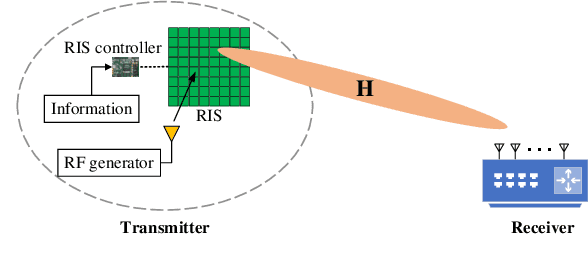
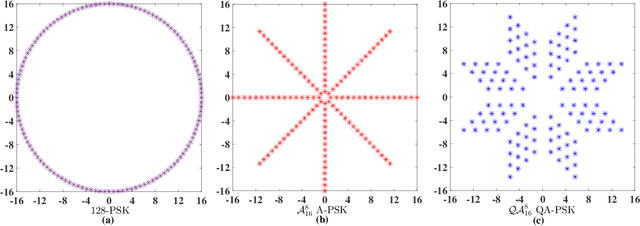
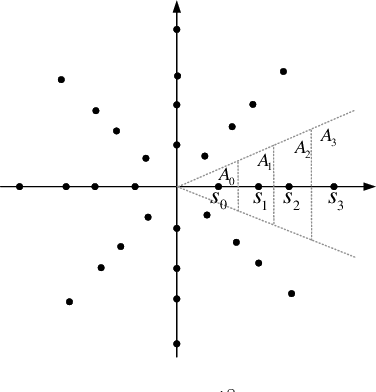
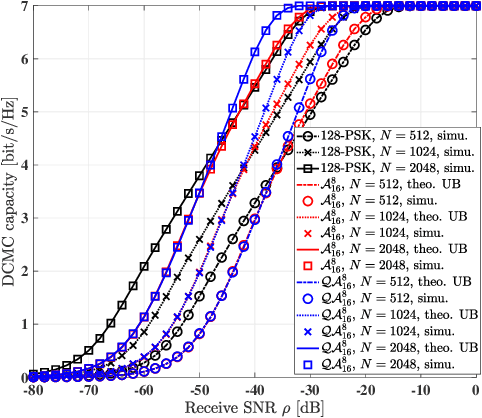
Abstract:New reconfigurable intelligent surface (RIS) based amplitude and phase modulation schemes are proposed as an evolution how the phase-only modulation schemes available in the literature. Explicitly, both the amplitude-phase shift keying (A-PSK) and quadrature amplitude-phase shift keying (QA-PSK) are conceived, where the RIS is assumed to be part of a transmitter to deliver information to the multi-antenna aided downlink receiver. In the proposed design, the RIS is partitioned into multiple blocks, and the information bits are conveyed by controlling both the ON-OFF state and the phase shift of the RIS elements in each block. Since the propagation paths spanning from each RIS block to the receiver can be coherently combined as a benefit of appropriately configuring the phase of the RIS elements, the received signal constellations can be designed by controlling both the ON-OFF pattern of the RIS blocks as well as the phase shift of the RIS elements. Both the theoretical analysis and the simulation results show that our proposed RIS-aided modulation schemes outperform the state-of-the-art RIS-based PSK modulation both in terms of its discrete-input-continuous-output memoryless channel (DCMC) capacity and its symbol error probability, especially in the high signal-to-noise-ratio (SNR) region, when considering realistic finite resolution RIS phase shifts.
Reconfigurable Intelligent Surfaces Relying on Non-Diagonal Phase Shift Matrices
Mar 15, 2022
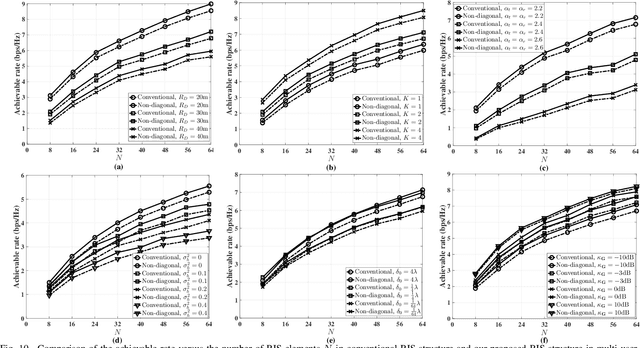


Abstract:Reconfigurable intelligent surfaces (RIS) have been actively researched as a potential technique for future wireless communications, which intelligently ameliorate the signal propagation environment. In the conventional design, each RIS element configures and reflects its received signal independently of all other RIS elements, which results in a diagonal phase shift matrix. By contrast, we propose a novel RIS architecture, where the incident signal impinging on one element can be reflected from another element after an appropriate phase shift adjustment, which increases the flexibility in the design of RIS phase shifts, hence, potentially improving the system performance. The resultant RIS phase shift matrix also has off-diagonal elements, as opposed to the pure diagonal structure of the conventional design. Compared to the state-of-art fully-connected/group-connected RIS structures, our proposed RIS architecture has lower complexity, while attaining a higher channel gain than the group-connected RIS structure, and approaching that of the fully-connected RIS structure. We formulate and solve the problem of maximizing the achievable rate of our proposed RIS architecture by jointly optimizing the transmit beamforming and the non-diagonal phase shift matrix based on alternating optimization and semi-define relaxation (SDR) methods. Moreover, the closed-form expressions of the channel gain, the outage probability and bit error ratio (BER) are derived. Simulation results demonstrate that our proposed RIS architecture results in an improved performance in terms of the achievable rate compared to the conventional architecture, both in single-user as well as in multi-user scenarios.
 Add to Chrome
Add to Chrome Add to Firefox
Add to Firefox Add to Edge
Add to Edge